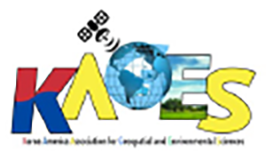Abstract
This study provides geographical counterpoint to existing knowledge of a dance piece through approaches from GIScience and visualization by focusing on spatio-temporal movement of dancers in a large dataset of the dance. The goal of this study is to introduce a new application to bridging art and science in the domain of dance and geography disciplines. The study utilizes existing methodologies in GIScience, including exploratory spatial data analysis (ESDA), spatial analysis, Relative Motion (REMO) analysis, and Qualitative Trajectory Calculus (QTC) analysis for the reasoning of the dance data. The results of the study demonstrate the following. First, spatio-temporal information in the dance can be better understood by using approaches in geography, including ESDA, spatial analysis, REMO analysis, QTC analysis, and visualization. Second, the REMO analysis measured relative azimuth, speed, and δ-speed of the dancers per space and time and intuitively visualized their interactions. Third, the QTC analysis showed an example of measuring similarity and difference between repetitive movements of the dancers. The study exhibits how approaches of GIScience in geography could contribute to finding new knowledge of choreographic information that has been, in general, hard to recognize through other disciplines such as dance and statistics.
Recommended Citation
Ban, Hyowon and Ahlqvist, Ola
(2020)
"Geographical Counterpoint to Choreographic Information based on Approaches in GIScience and Visualization,"
International Journal of Geospatial and Environmental Research: Vol. 7:
No.
3, Article 4.
Available at:
https://dc.uwm.edu/ijger/vol7/iss3/4

